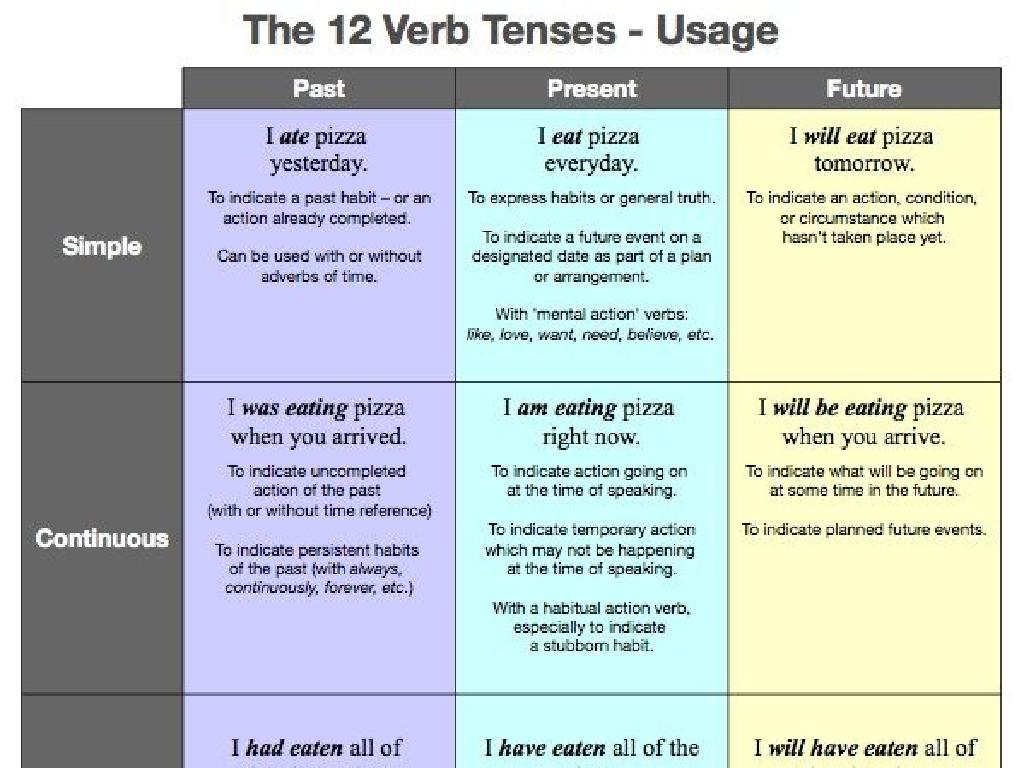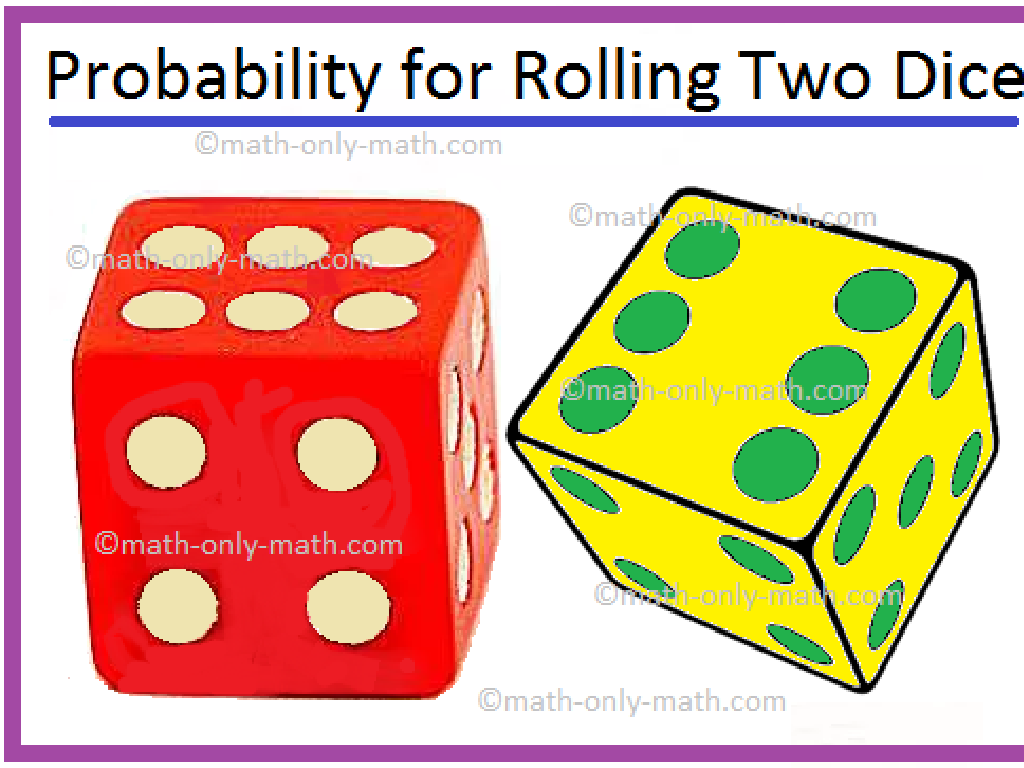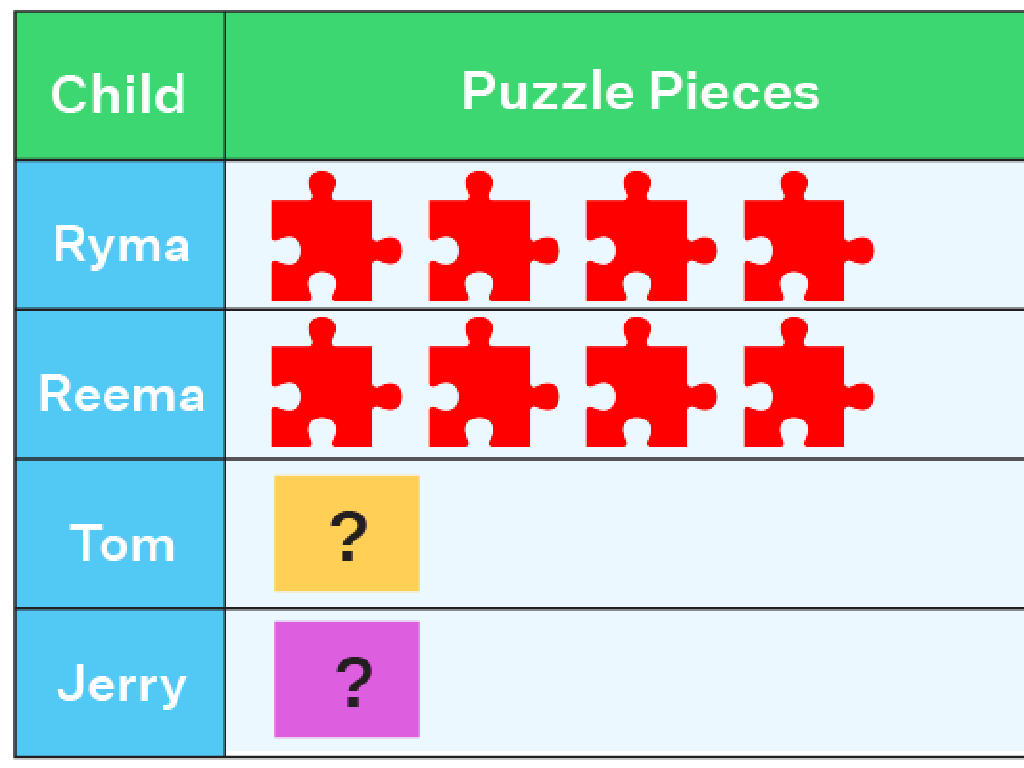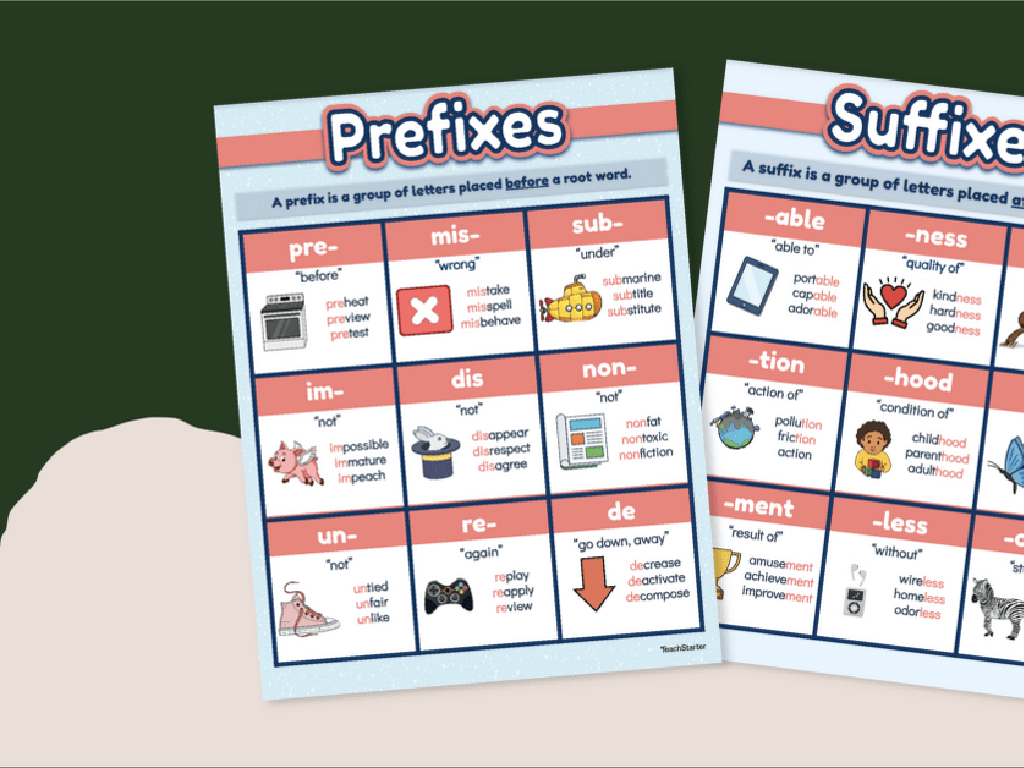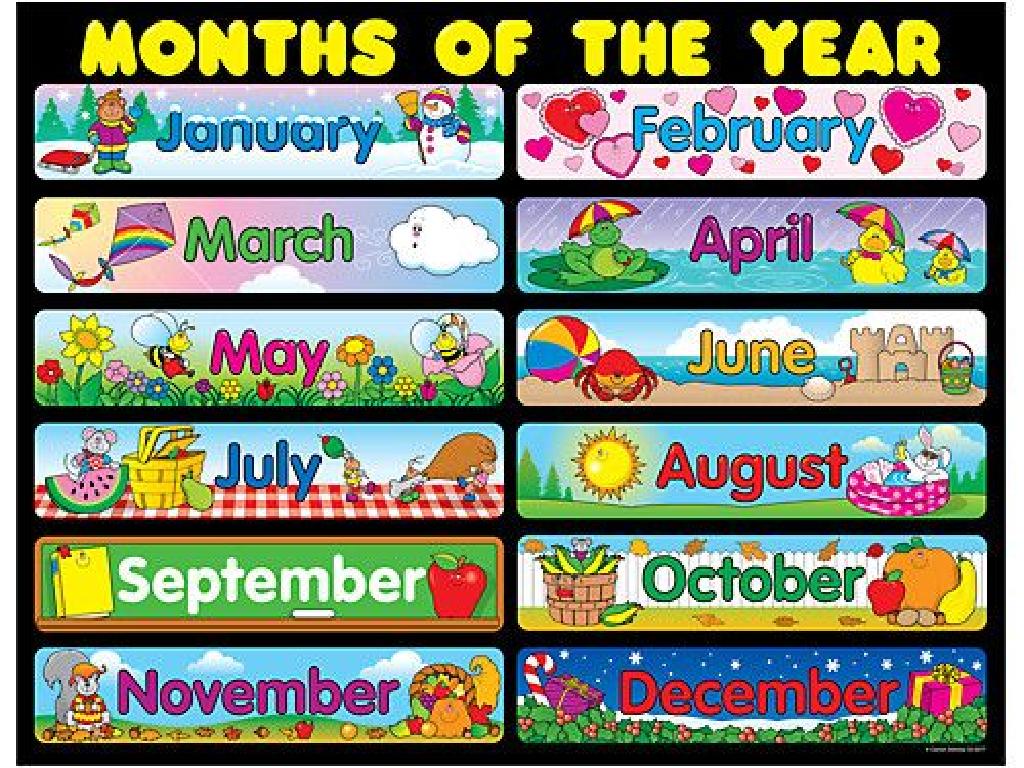Compare Ratios: Word Problems
Subject: Math
Grade: Sixth grade
Topic: Ratios And Rates
Please LOG IN to download the presentation. Access is available to registered users only.
View More Content
Welcome to Ratios!
– Understanding Ratios
– A ratio shows the relative sizes of two or more values.
– Comparing with Ratios
– Ratios let us see which quantity is larger or smaller and by how much.
– Ratios in Daily Life
– Examples: Ingredients in a recipe, or distance speed of different animals.
– Practice Ratio Problems
|
Introduce the concept of ratios, which are comparisons of two quantities showing the relative sizes of these values. Explain how ratios are used to compare different quantities, such as parts of a whole or one quantity in relation to another. Provide real-life examples where ratios are applicable, like mixing ingredients in a recipe or comparing the speed of two animals. This will help students understand the practicality and relevance of ratios in everyday life. Conclude with some practice problems to reinforce the concept. Encourage students to think of their own examples and to understand that ratios are everywhere around us.
Understanding Ratios
– Define a ratio
– A ratio shows the relative sizes of two or more values.
– Notation of ratios
– Ratios can be written as 3:1, 3 to 1, or 3/1.
– Parts of a ratio
– Terms are the numbers in a ratio; antecedent is first, consequent is second.
– Ratio application
|
This slide introduces the concept of ratios, which are a fundamental part of comparing quantities in mathematics. A ratio is a way to show the relationship between two numbers or amounts, indicating how many times one value contains another. The notation of ratios can vary, but the meaning remains the same. Understanding the parts of a ratio is crucial for solving problems related to them. The antecedent (first term) and consequent (second term) are the components of ratios. Students should be able to identify and write ratios in different forms and understand the terms used. Encourage students to think of real-life examples where ratios are applicable, such as mixing paint colors or cooking recipes. This will help them grasp the concept more concretely.
Comparing Ratios: Word Problems
– Determine larger ratios
Compare by scaling ratios to see which is larger, e.g., 2:3 and 4:6.
– Use multiplication for comparison
Multiply to find common terms, e.g., 3:4 and 6:8, multiply by 2.
– Recognize equivalent ratios
Equivalent ratios have the same value, e.g., 1:2 is the same as 2:4.
– Practice with examples
|
This slide introduces students to the concept of comparing ratios through word problems. Start by explaining how to determine which of two ratios represents a larger or smaller quantity by scaling them to have a common term. Then, demonstrate how multiplication can be used to compare ratios by finding equivalent ratios with common terms. Provide examples of equivalent ratios to solidify understanding. In class, engage students with practice problems where they apply these methods to compare ratios in various contexts, such as mixing paint colors or comparing recipe ingredients. Encourage group work to foster collaborative problem-solving skills.
Solving Ratio Word Problems
– Read the problem carefully
– Understand what the question is asking.
– Find the ratios in the text
– Look for numbers that compare quantities.
– Follow steps to solve the problem
– Write down the ratios, set up a proportion, and solve.
– Practice with examples
– Use sample problems to apply what you’ve learned.
|
This slide is aimed at helping students tackle ratio word problems by breaking down the process into manageable steps. Start by reading the problem thoroughly to understand what is being asked. Next, identify the ratios present in the problem; these are often comparisons between two quantities. Teach the students the steps to solve these problems, which include writing down the ratios, setting up a proportion, and solving for the unknown. Encourage students to practice with examples to reinforce the concept. Provide several practice problems with varying difficulty and context to ensure students can apply the steps independently.
Comparing Ratios: Class Problem Solving
– Read the problem aloud
– Identify known and unknown ratios
– Determine ratios given and what we’re solving for
– Collaboratively solve the problem
– Use ratio reasoning to find the missing value
– Discuss the solution process
– Reflect on the steps taken to find the answer
|
This slide is designed to guide the class through a collaborative problem-solving exercise focused on comparing ratios. Start by reading the word problem aloud to ensure all students understand the context. Next, work together to identify the ratios that are provided in the problem and what ratios need to be found. As a class, use ratio reasoning to solve for the unknown ratios, ensuring to involve the students in each step of the process. After arriving at a solution, take time to discuss the methods used and clarify any misunderstandings. This exercise will help students to understand the concept of ratios in a practical context and develop their problem-solving skills.
Comparing Ratios: Word Problem Strategies
– Read the problem carefully
– Discuss solution approaches
– Consider drawing a picture or making a table
– Step-by-step problem solving
– Use ratio language: ‘for every’, ‘out of’, ‘compared to’
– Review and check answers
– Ensure the solution makes sense in context
|
This slide is focused on developing problem-solving strategies for comparing ratios through word problems. Start by reading the problem thoroughly to understand what is being asked. Encourage students to discuss different methods they might use to find the solution, such as visual aids or ratio tables. Guide them through solving the problem step by step, using clear ratio language to articulate their reasoning. After finding a solution, students should review their work to check for accuracy and ensure the answer is reasonable within the context of the problem. This process not only helps with the current problem but also strengthens overall problem-solving skills.
Ratio Word Problems: Practice Session
– Solve ratio problems individually
– Pair up to compare answers
– Did you get the same answers? What methods did you use?
– Discuss methods in pairs
– Share how you approached the problems
– Group discussion on strategies
– Talk about what worked and what didn’t
|
This slide is designed for a practice session on ratio word problems. Students will start by working on problems individually to apply their understanding of ratios. Afterward, they will pair up with classmates to compare their answers and discuss the different methods they used to solve the problems. This peer interaction encourages collaborative learning and helps students see various approaches to the same problem. Finally, the class will come together for a group discussion to review the solutions and strategies used. The teacher should facilitate this discussion, highlighting effective problem-solving techniques and addressing any common misconceptions. Possible activities could include solving problems with different levels of complexity, using manipulatives to visualize ratios, or creating their own word problems for peers to solve.
Class Activity: Ratio Scavenger Hunt
– Find classroom items in ratios
– Create word problems
– Use items & their quantities to form a ratio-based problem
– Share with classmates
– Solve each other’s problems
– Practice solving for an engaging math discussion
|
This interactive activity is designed to help students apply their understanding of ratios to real-world contexts within the classroom. Students will search for items that can be paired in specific ratios, such as pencils to erasers or windows to doors. They will then use these items to create their own word problems, incorporating the concept of ratios. Afterward, students will exchange problems with their classmates and work on finding solutions. This activity encourages collaboration, critical thinking, and practical application of ratios. For the teacher: Prepare a list of potential items and ratios as examples. Monitor the students as they create and solve problems to ensure they are on the right track. Provide assistance as needed and facilitate a discussion at the end to review key concepts and solutions.
Wrapping Up: Ratios in Our Lives
– Recap: Comparing Ratios
– Ratios in Daily Life
– Ratios help compare quantities, like ingredients in recipes or money spent.
– Homework: Ratio Problems
– Solve additional word problems to strengthen your understanding of ratios.
– Practice Makes Perfect
– Consistent practice is key to mastering the concept of ratios.
|
As we conclude today’s lesson, remind students of the key points in comparing ratios and how they apply to real-world situations. Emphasize the importance of understanding ratios for tasks such as cooking, shopping, and budgeting. For homework, assign a set of word problems that require students to apply what they’ve learned about comparing ratios. Encourage them to approach these problems methodically, breaking down each problem into smaller, manageable parts. Remind them that regular practice will help solidify their grasp of ratios and their ability to solve complex problems. In the next class, be prepared to review the homework assignment and discuss any challenges students faced.

